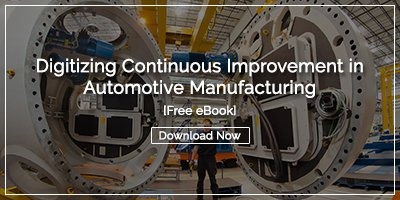 The term "Gemba" comes from Japanese and is widely used in various industries, particularly in lean manufacturing practices (or lean in other settings). "Gemba" (現場)—sometimes spelled "Genba"—translates to "the real place" or "the actual place" in English. In the manufacturing context, it refers to the place where value is created, where the actual work happens, such as the shop floor or production line.
The term "Gemba" comes from Japanese and is widely used in various industries, particularly in lean manufacturing practices (or lean in other settings). "Gemba" (現場)—sometimes spelled "Genba"—translates to "the real place" or "the actual place" in English. In the manufacturing context, it refers to the place where value is created, where the actual work happens, such as the shop floor or production line.
Gemba is a critical principle in the Toyota Production System (TPS), the foundation of lean manufacturing. The idea is to go to the Gemba to observe, understand, and improve processes directly where they occur. By being physically present where work is done, managers and employees can better identify inefficiencies and waste and support continuous improvement initiatives.
Gemba walks, where managers or supervisors walk the production floor to observe operations and talk to workers, are standard practices to embrace the Gemba philosophy. Gemba walk checklists are used to structure each event so it's not a random, aimless walk. This direct observation allows for a better understanding of the conditions, fosters communication, and enables employees to participate in continuous improvement.
What Is A Gemba Walk?
During a Gemba walk, managers venture to the production floor, shop floor, or any place where value is created. Gemba walk checklists are often used to ensure constancy and guide the process.
Here are just a few examples of Gemba walks:
Factory Floor Walk: Managers visit the production floor to observe manufacturing processes, check equipment conditions, and engage with assembly line workers.
Office Gemba Walk: In a business or office setting, managers might visit workstations to observe administrative processes, understand workflow, identify opportunities to streamline tasks, and engage with the people working there.
Retail Gemba Walk: In a retail environment, managers could walk through the store, observing customer interactions, checking product displays, and talking to sales associates to gain insights into customer preferences.
Healthcare Gemba Walk: In a hospital or healthcare setting, managers may walk through patient care areas to observe processes, interact with medical staff, and identify ways to improve patient care.
Why Is A Gemba Walk Important?
Gemba walks are a powerful technique for continuous process improvement in manufacturing. They allow organizations to stay close to the actual work, make informed decisions, and gain firsthand insight based on real-world observations.
The primary goals of a Gemba walk include:
Observation: Managers observe the production processes in action. This involves looking at how tasks are performed, understanding the sequence of operations, and identifying deviations from standard procedures. This often means standing in one place for a while instead of walking nonstop.
Understanding Processes: By being physically present at the Gemba, managers gain valuable insights into the actual work processes. This understanding goes beyond what can be gleaned from reports or meetings and allows for more accurate and data-driven decision-making.
Identifying Waste: One of the key objectives is to identify and eliminate waste in the processes. This waste may manifest as unnecessary steps, overproduction, excess inventory, waiting times, or defects. Gemba walks provide an opportunity to spot these inefficiencies firsthand or hear about them from team members.
Engaging with Frontline Workers: Managers interact directly with frontline workers, discussing their tasks, challenges, and insights. This engagement fosters a sense of collaboration and allows managers to tap into the knowledge and experience of those directly involved in the work, allowing for real-time identification of improvement opportunities and providing support to remove barriers as needed.
Continuous Improvement: Gemba walks are not just about identifying problems but also about finding solutions and opportunities for improvement. Managers can work with frontline workers to implement changes that enhance efficiency, quality, and overall performance.
Key Elements of a Gemba Walk Checklist
A successful Gemba walk involves a systematic approach to observing, understanding, and improving processes in the actual work environment. An efficient Gemba walk checklist should encompass critical elements related to safety, quality, production flow, and employee engagement. Some Gemba walks might have a broad focus, while some might focus specifically on one thing, like safety.
Here's a breakdown of essential components for a comprehensive Gemba walk checklist:
Safety
Personal Protective Equipment (PPE): Ensure employees wear appropriate PPE for their tasks.
Work Area Safety: Check for any potential safety hazards or concerns in the work area.
Emergency Procedures: Confirm that employees are aware of and understand emergency procedures.
Quality
Product Standards: Verify that the products or services are aligned with established quality standards.
Defects and Rework: Identify any defects or instances of rework and ensure the root causes are being investigated and acted upon.
Quality Control Measures: Assess the effectiveness of existing quality control measures.
Production Flow and Process
Workflow Observations: Observe the flow of work to identify bottlenecks or areas of inefficiency.
Production Targets: Evaluate whether production targets are being met and investigate any deviations.
Inventory Levels: Check for excess inventory or shortages that may impact production flow.
Employee Engagement
Communication: Evaluate the effectiveness of communication between management and frontline frontline workers.
Employee Morale: Gauge the overall morale and motivation of the workforce, including participation levels in continuous improvement.
Feedback Mechanisms: Ensure there are mechanisms in place for employees to provide feedback on processes.
Work Environment
Visual Controls: Check the effectiveness of visual management tools, such as signage and indicators.
Standardized Work: Ensure that standardized work procedures are followed and accessible to employees and supervisors.
Workspace Organization: Ensure that only items needed during the production process are in the workspace and that there is a designated location for equipment, raw materials, and inventory.
Productivity
Kaizen Opportunities: Identify opportunities for continuous improvement (Kaizen) and discuss them with the team.
Waste Reduction: Look for and discuss strategies to eliminate waste in the processes.
Employee Suggestions: Encourage and explore productivity suggestions for improvement from frontline frontline workers.
How to Create and Use a Gemba Walk Checklist
Creating and using a Gemba Walk checklist is crucial to implementing successful continuous improvement practices in a manufacturing environment. Below are the steps to create and effectively use a Gemba Walk checklist:
Step 1. Define Your Objectives
Clearly outline the objectives of the Gemba Walk. Determine if the focus is on safety, quality improvement, production flow, employee engagement, or a combination. The objectives should align with the overall organizational goals and strategic priorities.
Define specific criteria for each key area. For example, include items like PPE usage and emergency procedure compliance under safety. For production flow, consider workflow efficiency and inventory management.
Step 2. Prepare The Team and Key Stakeholders
Collaborate with frontline frontline workers, supervisors, and relevant stakeholders to gather input on critical areas that need attention. Incorporate their perspectives into the checklist. The employees directly involved in the process are essential to the Gemba walk team. They should understand the event's purpose and be prepared to participate actively.
Develop checklists for each key area, listing the criteria to be assessed during the Gemba Walk. Use a format that allows for easy documentation and includes space for notes.
Step 3. Focus On The Process and Critical Aspects
High-impact Gemba Walk checklist items directly contribute to organizational goals, such as improving efficiency, ensuring quality, enhancing safety, and fostering employee engagement. Examples include:
- Are workers able to identify and address defects promptly during the production process?
- Is the workflow at each workstation smooth, or are there bottlenecks?
- Is there a clear and accessible mechanism for employees to provide process feedback?
Step 4. Stick To The Value Stream
The value stream is crucial in a Gemba walk because it provides a holistic view of the entire process, from the initial stages of production to the final product or service delivery.
The value stream mapping during a Gemba walk helps identify different types of waste, such as overproduction, waiting times, unnecessary transportation, excess inventory, and defects. Organizations can develop waste reduction and process optimization strategies by pinpointing these inefficiencies.
Step 5. Write Down Observations
Follow the checklist systematically, checking off items and taking notes as you observe each key area. Engage with employees to gather additional insights.
Document observations, areas of improvement, and positive practices. Note any action items that need follow-up.
Step 6. Ask Questions
Open-ended questions are crucial during a Gemba walk as they encourage detailed responses and provide valuable insights into the processes and challenges employees face. Here are some open-ended questions you can ask (or requests you can make) during a Gemba walk:
Process Understanding:
- Please walk me through the steps involved in this process.
- How do you approach [specific task] in your daily work?
- What variations or exceptions do you encounter in this process?
Problem Identification:
- What challenges or obstacles do you face in completing your tasks?
- What is an example of a recent issue or difficulty you've encountered?
- What are the common pain points in this workflow?
Improvement Opportunities:
- In your opinion, what aspects of this process could be improved?
- What inefficiencies do you think could be addressed?
- If you had the authority to change something in this process, what would it be?
Employee Suggestions:
- What ideas do you have for making this process more efficient?
- How could we enhance collaboration within the team?
- What tools or resources would improve your workflow?
Communication and Collaboration:
- How would you describe communication within the team?
- What communication barriers hinder your work?
- In what ways do team members collaborate effectively?
Training and Development:
- How adequately trained are you for the tasks you perform?
- What skills or knowledge gaps that you've identified?
- How can we better support your ongoing learning and development?
Customer Focus:
- How does this process impact the quality of the product/service for our customers?
- Which bits of customer feedback or insights would you find particularly valuable?
- What steps can we take to meet customer expectations better?
Safety and Well-being:
- What are the safety concerns or potential hazards in your work area?
- How can we enhance employees' overall well-being and comfort in this workspace?
Step 7. Keep Suggestions For Later
Use the checklist findings to guide the implementation of changes following the Gemba walk and a period of reflection. This may involve adjusting processes, updating standard operating procedures, or providing additional training.
Managers can implement changes during a Gemba walk. Still, the primary focus of the Gemba walk is to observe, understand, and identify opportunities for improvement rather than to make immediate changes. The Gemba walk is a part of the continuous improvement process, and its purpose is to engage leadership in the actual work environment to gain firsthand knowledge.
Managers can commit to addressing specific issues or implement changes based on their observations during the Gemba walk. This commitment demonstrates leadership's dedication to continuous improvement.
Step 8. Walk With Your Team
Including frontline frontline employees in the Gemba walk is essential. They can provide valuable insights into their daily work, share concerns, and contribute ideas for improvement. This inclusion also fosters a culture of collaboration and communication.
Individuals responsible for specific processes or areas should participate in the Gemba walk. They can offer in-depth information about their areas of expertise and collaborate on finding solutions to identified issues.
Depending on the nature of the Gemba walk, including representatives from different departments or functions may be beneficial. This promotes a holistic understanding of the entire value stream and encourages collaboration across organizational boundaries.
Members of teams focused on continuous improvement, such as Lean or Six Sigma teams, can actively participate in Gemba walks. They can contribute their expertise in identifying and addressing process inefficiencies.
The key is to create a diverse and collaborative group that can collectively assess the current state of operations, discuss potential improvements, and work together to implement positive changes. This collaborative approach helps in fostering a culture of continuous improvement and employee engagement.
Step 9. Keep The Schedule Flexible
The frequency and schedule of Gemba walks can vary depending on the nature of the organization, the industry, and the specific goals of the Gemba walks. However, here is a general guideline that you can consider when planning Gemba walks in manufacturing:
Regularity:
Conduct Gemba walks regularly to ensure ongoing engagement with the actual work environment. Depending on the organization's size and complexity, Gemba walks can be scheduled weekly, biweekly, or monthly.
Consistency:
Maintain consistency in the schedule to establish a routine. This helps employees anticipate and prepare for the Gemba walks. Avoid scheduling Gemba walks too far apart to ensure that issues are identified and addressed promptly.
Variety:
Rotate the areas or departments that are the focus of Gemba walks. This ensures that the entire organization is covered over time. Vary the time of day for Gemba walks to capture different shifts and working conditions. This variation provides insights into how processes and dynamics may change throughout the day.
Flexibility:
Be flexible with the schedule to accommodate urgent needs or emerging issues. Gemba walks should be adaptable to the dynamic nature of the workplace.
Duration:
Keep Gemba walks focused and time-bound to respect the work schedules of both leaders and employees. The duration of Gemba walks can range from 30 minutes to a few hours, depending on the scope and objectives.
Step 10. Gather Feedback
Review the checklist with a small pilot group to ensure it is comprehensive and easy to use. Make adjustments and record observations based on feedback and testing.
After the Gemba Walk:
- Debrief with the team.
- Discuss findings, prioritize action items, and determine responsibilities for implementing improvements.
- Schedule time for feedback sessions and follow-up discussions after Gemba walks.
This ensures that observations are discussed, insights are shared, and action plans are developed.
Conclusion:
Gemba walks are an indispensable practice in manufacturing (and other industries), providing a direct and insightful approach to understanding operational realities on the shop floor. Their role in driving continuous improvement, a cornerstone of lean manufacturing, cannot be overstated. One key element that significantly enhances their efficacy is the implementation of a well-designed Gemba walk checklist.
The checklist acts as a compass, guiding leaders through the intricacies of the manufacturing process, helping them identify inefficiencies, reduce waste, and ultimately contribute to enhancing customer satisfaction. Crucially, simplicity emerges as a linchpin for success. The process becomes more efficient and actionable by streamlining the Gemba walk checklist, focusing on the most critical factors, and avoiding unnecessary complexity.
As manufacturing environments evolve, so too should Gemba walk practices. Constantly refining and improving the Gemba walk checklist is not just a recommendation but a strategic imperative for future improvement efforts. The data collected during these walks becomes the foundation for informed decisions, paving the way for sustained success in lean manufacturing.
In essence, an effective Gemba walk, coupled with a thoughtfully designed checklist, is a catalyst for positive change. Organizations can foster a culture of continuous improvement by consistently engaging with the shop floor, promptly addressing issues, and leveraging the power of lean principles.
How KaiNexus Can Help
KaiNexus revolutionizes Gemba walks in the manufacturing industry by seamlessly integrating digital tools and applications, streamlining the process, and significantly enhancing efficiency. This innovative technology provides a tailored solution that addresses the unique challenges faced on the shop floor, making Gemba walks more accessible and impactful.
Digital Tools for Gemba Walks:
KaiNexus introduces a suite of digital tools and applications crafted explicitly for Gemba walks. These tools replace traditional paper-based checklists and add functionality, allowing for dynamic, interactive, and collaborative assessments. This transition to digital ensures that the Gemba walk process becomes more agile, responsive, and capable of meeting the evolving needs of modern manufacturing environments.
Simplified Checklist Management:
KaiNexus simplifies checklist management by providing a centralized platform for creating, updating, and distributing checklists. The intuitive interface allows for easy customization, ensuring that Gemba walk checklists align precisely with the unique requirements of each manufacturing setting. The ability to swiftly adapt checklists in response to changing conditions makes KaiNexus an invaluable asset for maintaining relevance and effectiveness in the manufacturing industry.
Efficient Data Collection:
One of KaiNexus's crucial features is the ability to streamline data collection during Gemba walks. Through mobile applications, teams can effortlessly input real-time observations, identify bottlenecks, and highlight areas for improvement. The seamless integration of data into the digital platform reduces the risk of manual errors and accelerates the analysis process, facilitating quicker decision-making and action.
Robust Reporting Capabilities:
KaiNexus enhances the reporting aspect of Gemba walks by providing robust analytics tools. Leaders can generate comprehensive reports that distill the data collected during Gemba walks into actionable insights. This visibility empowers management to prioritize improvement initiatives, allocate resources strategically, and track the impact of changes over time.
Practical Tips for Integrating Technology into Gemba Walks
User Training: Ensure teams are adequately trained to utilize digital tools to maximize their efficiency during Gemba walks.
Compatibility: Verify that the solution integrates with existing systems to minimize disruption and enhance ease of adoption.
Continuous Improvement: Encourage a culture of constant improvement in manufacturing processes and utilizing technology. Regularly assess feedback and explore updates to maximize evolving digital capabilities.
KaiNexus transforms Gemba walks in the manufacturing industry by leveraging digital tools to simplify checklist management, streamline data collection, and enhance reporting capabilities. Embracing this technology facilitates a more efficient Gemba walk process and positions manufacturing organizations at the forefront of the continuous improvement journey.




Add a Comment